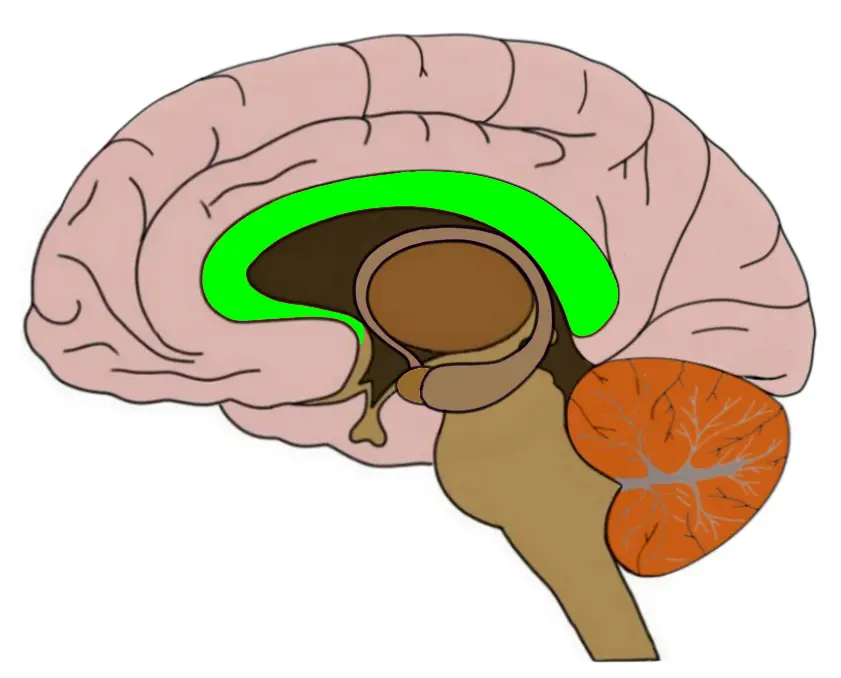Know your brain: Corpus Callosum
Where is the corpus callosum?

The corpus callosum is a large, C-shaped nerve fiber bundle found beneath the cerebral cortex.It stretches across the midline of the brain, connecting the left and right cerebral hemispheres. It makes up the largest collection of white matter tissue found in the brain.
What is the corpus callosum and what does it do?
To understand the role of the corpus callosum, it is first important to remember that the brain is divided into two cerebral hemispheres (right and left). The hemispheres are made distinct from one another by a long groove called the medial longitudinal fissure. On a large scale, the two hemispheres are nearly identical, but on a microscopic and functional level there are some differences.
When information like sensory data is sent to the brain it is typically received first in one hemisphere. For example, when you type on your keyboard, information about the feel of the keys is sent up from your right hand to the primary somatosensory cortex on the left side of your brain. That information, however, must then be shared with the right side of your brain as well. That's where the corpus callosum comes into play. It is a large bundle of fibers that connects the left and right hemispheres, and it carries information received in one hemisphere over to the other.
Split-brain patients
In the second half of the twentieth century, Roger Sperry, Michael Gazzaniga, and others studied patients whose corpus callosum had been severed in a procedure called a corpus callosotomy. The procedure is normally undertaken as a last-resort treatment of epilepsy, as it can stop seizures from spreading from one hemisphere of the brain to another. The patients became known as split-brain patients.
Surprisingly, a corpus callosotomy can be completed without severe side effects; the side effects that do appear are often language related. Sperry and Gazzaniga explored language deficits in callosotomy patients in detail. In the process, they learned some interesting things about how language centers are distributed across the cerebral hemispheres and how the corpus callosum facilitates communication between the two sides of the brain.
Sperry and Gazzaniga presented split-brain patients with visual stimuli, but only to one eye at a time. For example, they would present an image of a flower to the right eye, but cover the left eye. They found that split-brain patients, when presented with a visual image to only their left eye, could not name the object shown in the image.
Sperry and colleagues hypothesized that this occurred because visual information for the majority of the visual field travels to the opposite side of the brain to be processed. If the object is shown to the left eye, most of the information travels to the right side of the brain. Normally, this information would then be shared with the opposite hemisphere by way of the corpus callosum. The researchers suggested that split-brain individuals could not name the object if it was shown only to the left eye because the visual information was not reaching the left side of the brain, which is where our important language centers are located.
Much of what you've heard about one cerebral hemisphere being dominant in the management of a particular skill or capacity is probably exaggerated. For example, someone who is creative doesn't likely have an overall bias toward thinking with the right side of her brain. Instead, most skills are spread fairly evenly throughout both hemispheres. Language, however, appears to be an exception. In most people, speech is generated in the left hemisphere, and thus the left hemisphere is considered to be the dominant hemisphere for language.
Thus, according to Sperry and Gazzaniga, because language centers are located in the left side of the brain, when an image is presented to the left eye of a split-brain patient, the patient's language areas are not privy to the visual information. The information travels to the right hemisphere but does not cross back over to the left due to the severed corpus callosum. So, the ability to place a name to the object is limited.
These experiments helped to demonstrate the importance of the left hemisphere in language processing as well as the importance of the corpus callosum in bridging the two cerebral hemispheres. However, they also demonstrated the versatility and resiliency of the brain, as in most split-brain patients other tracts like the anterior commissure still carry enough information between the cerebral hemispheres to allow overall functionality to be somewhat normal.
References:
Gazzaniga MS. Forty-five years of split-brain research and still going strong. Nat Rev Neurosci. 2005 Aug;6(8):653-9. doi: 10.1038/nrn1723. PMID: 16062172.
Nolte J. The Human Brain: An Introduction to its Functional Anatomy. 6th ed. Philadelphia, PA. Elsevier; 2009.


